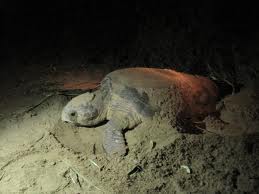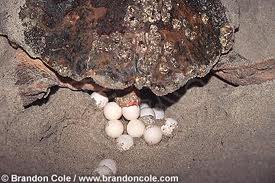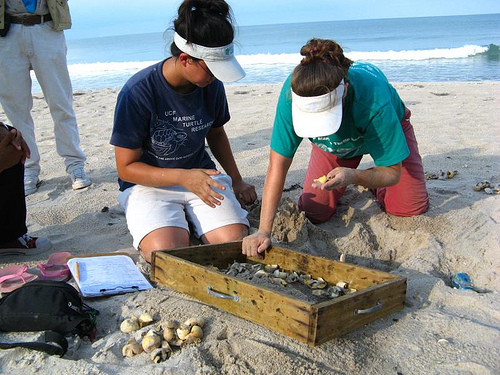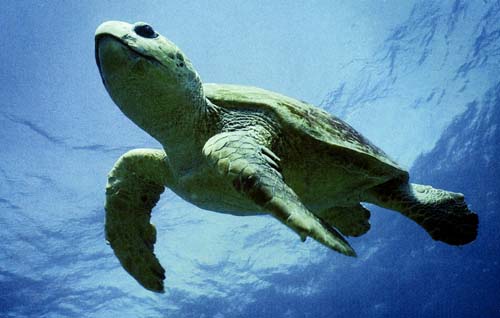Bundaberg

Peregrina's Journey
Peter and Margie Benziger
Thu 20 Jan 2011 05:45
Position Report - 24:45.614S 152:23.270E
Our last general email left off in Pancake Creek. From there, we sailed about 60 miles south to
the Bundaberg Port Marina which lies at the mouth of the Burnett River. (We’re still on the southeast coast of
Australia for those without a map) The
actual city of Bundaberg is further inland about 9 miles down the river but we
decided to stay at the easily accessible Port Marina since they had excellent
facilities, a great restaurant and a courtesy bus that would take us into town
upon request.
What’s more, we were now on a mission to get to Brisbane in
time to meet Amy, who would arrive on December 12th so we didn’t
want to stray too far inland. Little did
we know, we’d be spending a week in Bundaberg!
You see, this was to be our “no holds barred” introduction to the summer
“rainy season” here in Australia and, after several years of unprecedented
drought, it turns out this one is going to be a doosey!!! La Nina has arrived with a vengeance, it
appears…
A week in Bundaberg really wasn’t’ all that bad – aside from
the rain and winds gusting up to 40 knots.
We celebrated Thanksgiving there with a wonderful group of newfound
friends, including a couple from our old hometown of Boca Raton, Florida! (Small world, yet again…)
And, we discovered Bundaberg Ginger Beer!
An acquired taste to be sure…Bundaberg Ginger Beer features pungent
ginger pieces floating in a cloudy liquid base of carbonated water and sugar
cane. While Bundaberg is probably better
known for its hometown rum, we found the non-alcoholic ginger beer more to our
liking – SERIOUSLY!!! You can tour the
family-run business which is smack dab in downtown Bundaberg in a factory
shaped like a HUMUNGEOUS wooden barrel.
The Bundaberg Barrel offers “True Brew” tours daily including free
samples. It’s open Monday to Saturday 9am to 4.30pm and Sunday 10am to 3pm.
Bundaberg
(“Bundy” to the locals) has a Wild West feel to it – an old “outback” cowboy town
reminiscent of the 1800’s with wooden structures lining the wide boulevards in
the center of town – very Victorian in architecture. There’s a huge backpacker community here –
mainly because they can find temporary work picking fruit in the orchards
nearby. It’s a touchy-feely back-to-nature
atmosphere with the farms practicing sustainable “fair trade” policies and
young people coming together from all over the world in an eco-friendly
environment.
Speaking
of eco-friendly, one of the best turtle sanctuaries in Australia is located
right outside of Bundaberg. It’s called
the Mon Repos Rookery and between November and March, hundreds of turtles,
mainly loggerheads, drag themselves up the beach to lay their eggs, referred to
as a “clutch.” In fact, Mon Repos hosts
the largest
concentration of nesting marine turtles on the Eastern
Australian mainland and is one of the two largest Loggerhead turtle rookeries
in the South Pacific Ocean.
We learned a lot on our tour at the Rookery. Among the many things I didn’t know….Female
turtles nest in the same area where they were born. As hatchlings, they become aligned with the
Earth’s magnetic field, and perhaps also the smell, current and wave direction
of the waters near their nesting beach. They use these cues and a ‘magnetic
compass’ in their brain to navigate their way back home when it’s time to
procreate. Some lay up to six clutches
before departing for their feeding grounds, which can be up to 3,000 km away! They won’t return to nest again for another
three to five years but, somehow, they will find their way back to the exact
same place!
Once the
mother digs her nest and deposits her eggs, usually around 120 per “clutch”,
the good people at this wildlife sanctuary cordon off the area and monitor the
eggs during incubation. After 45-70 days,
depending on the temperature, the hatchlings emerge from the shell and make a
mad dash back to the sea in the dark of night.
The sex of the hatchling is determined
by incubation temperature, with warmer beaches producing mostly female
hatchlings.
Unfortunately,
only 1 in 1000 will survive to adulthood so you begin to realize what an
important job it is to provide them with the best possible start in life. Marine turtles worldwide are in danger of
extinction from a host of predators.Birds,
iguanas, crabs and foxes snatch many turtle hatchlings before they can even
reach the water. Once at sea, they face marine predators and other dangers –
mostly in human form. Each year, turtles
drown in fishing nets, are hooked in longlines, struck by boats, strangled or
choked by rubbish and slaughtered for leather, meat and shells. In some places, coastal developments such as
marinas and high-rise buildings damage turtles’ nesting areas. On some beaches, the turtles risk being
crushed by 4WDs. It’s a miracle anyone
of them survive! At least, these little guys here
at Mon Repos have a fighting chance…




